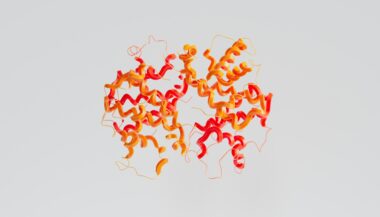Literature as well as our own experience provides ample evidence as to why innovation efforts are often not successful. A common cause lies in how we perceive and think.
This common cause is known in cognitive science and neuroscience as the Predictive Mind Hypothesis: Our brain uses past experiences to predict and understand new ones. In order to understand what is going on in the world, our brain uses so called mental models, which are based on our past experiences, hypotheses we’ve constructed and our “knowledge” about the world. Based on these mental models, our brain tries to predict what is going to happen. This leads to a dynamics of perception, thinking and acting that is aimed at reducing prediction errors, instead of at being open and susceptible to novelty. Our brain is trying to “protect” us from the unknown, by making us blind to it.
How much of our environment do we really notice? What slips our attention? Are there aspects of the world, which, were we to perceive them, could lead to entirely new insights and innovations?
Innovation Challenge #1: We can’t see what we don’t expect.
A central challenge for future-oriented innovation is the question of how much (cognitive and perceptual) control we exert over reality. In this context, “control” refers to the fact that our brain, to a large extent, determines what we can perceive, and most importantly: what we can’t.
Remember: The Predictive Mind Hypothesis shows that our brain uses past experiences to predict the future, and then tries to verify its own predictions. This entails that our perception is strongly determined by our current knowledge, and that we cannot see what we do not expect (i.e. what does not fit in our patterns of perception and thinking).
Innovation Challenge #2: We create self-fulfilling prophecies.
“We enact what we think.” Following the Predictive Mind Hypothesis, we have to realize that we do not only use past experiences to predict what is going to happen, but that we act so as to make our predictions come true (i.e. we enact what we think). This leads to a dynamic of self-fulfilling prophecies: our predictable, highly experience-driven actions reinforce existing patterns of perception and thinking. As a result, it is even more difficult to overcome routines, introduce innovations and promote change.
Innovation challenge #3: Blind spots hinder organizations from discovering novelty.
The Predictive Mind Hypothesis applies not just to the individual but also to entire organisations. As a result, organizations develop “blind spots” that often prevent them from being open to new things. Radical and groundbreaking innovations become impossible or at least very difficult to implement.
We are trapped not only in the patterns of our thoughts and perceptions, but also in the routines of our actions. These dynamics are the greatest obstacles when we try to open ourselves to an unfolding, uncertain and unknown future. Hence, when we want to innovate, we first have to deal with our patterns of perception, thinking and acting, by identifying and changing them.
Which strategies can we employ to overcome these innovation challenges? Find out here in our Blogpost “Innovation Strategies”.
Image: Paul Casals at Unsplash
Subscribe to Our Newsletter
Keep your innovative edge with more stories like this and additional reading tips, muses, and project updates.


